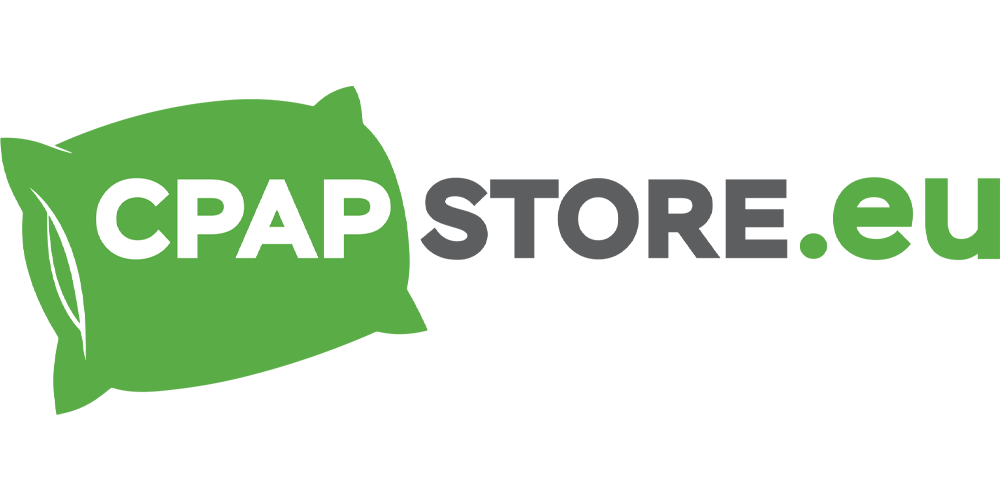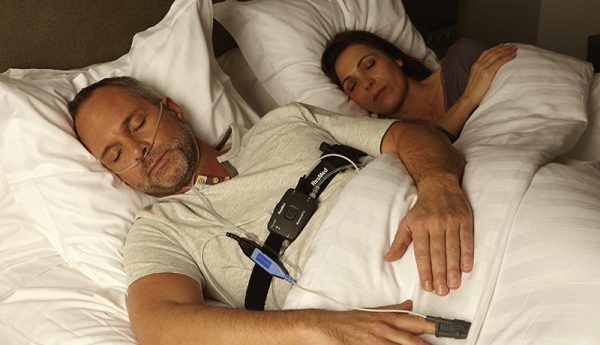What is Sleep apnea, is a common condition that causes you to stop breathing for short intervals while you sleep. If left untreated, it can have significant health effects over the long term.
If your doctor thinks you may have sleep apnea, you’ll likely undergo a nighttime sleep test that monitors your breathing.
Let’s take a closer look at the test options that are available for diagnosing sleep apnea.
How is sleep apnea diagnosed?
To diagnose sleep apnea, your doctor will first ask you about your symptoms.
Your doctor may ask you to complete one or more questionnaires to evaluate symptoms like daytime sleepiness as well as risk factors for the condition, such as high blood pressure, obesity, and age.
If your doctor suspects sleep apnea, they may recommend a sleep monitoring test. Also called a sleep study or polysomnography (PSG), it involves spending the night at a lab, clinic, or hospital. Your breathing and other vital signs will be monitored while you sleep.
It’s also possible to monitor your sleep in your own home. Your doctor might suggest at-home sleep monitoring if your symptoms and risk factors strongly suggest sleep apnea.
In-lab sleep study
In-lab sleep studies are used to diagnose sleep apnea, along with a wide range of other sleep disorders.
Many sleep studies generally take place between 10 p.m. and 6 a.m. If you’re a night owl or morning lark, this time frame may not be optimal. An at-home test may be recommended instead.
You’ll stay in a private room designed to make you feel comfortable, much like a hotel room. Bring pajamas and anything else you usually need to sleep.
Sleep studies are noninvasive. You don’t need to give a blood sample. However, you’ll have a variety of wires attached to your body. This enables the sleep technician to monitor your breathing, brain activity, and other vital signs while you’re asleep.
The more relaxed you are, the better the technician can monitor your sleep.
Once you fall asleep, the technician will monitor the following:
- your sleep cycle, as determined by your brain waves and eye movements
- your heart rate and blood pressure
- your breathing, including oxygen levels, breathing lapses, and snoring
- your position and any limb movements
There are two formats for sleep studies: full night and split night.
During a full-night sleep study, your sleep will be monitored for an entire night. If you receive a diagnosis of sleep apnea, you may need to return to the lab at a later date to set up a device to help you breathe.
During a split-night study, the first half of the night is used to monitor your sleep. If sleep apnea is diagnosed, the second part of the night is used to set up the treatment device.
Pros and cons of an in-lab sleep study
In-lab sleep tests have advantages and disadvantages. Talk to your doctor about your test preference.
Pros
- Most accurate test available. An in-lab sleep test is considered the gold standard of diagnostic testing for sleep apnea.
- Option to do a split-night study. Split-night studies allow for diagnosis and treatment in a single night, unlike both full-night and at-home tests.
- Best test for certain types of work. People who pose a serious risk to themselves or others if they fall asleep on the job should participate in an in-lab sleep study to ensure an accurate diagnosis. This includes people who work as taxi, bus, or ride-share drivers, as well as pilots and police officers.
- Best option for people with other sleep disorders or complications. In-lab monitoring is more suitable for people with other health conditions, including sleep disorders and heart and lung diseases.
Cons
- Costlier than an at-home test. In-lab tests cost upward of $1,000. If you have insurance, your provider may cover some or all of the cost, but not all providers cover this test. Some providers require the results of an at-home test before you can take an in-lab test.
- Less accessible. In-lab studies require transportation to and from a sleep lab. Depending on where you live, this may be time-consuming or costly.
- Longer wait times. Depending on where you live and the demand for this kind of test, you may have to wait several weeks or even months to take the test.
- Less convenient. Taking an in-lab sleep test is more likely to disrupt your work schedule or interfere with your daily routine and responsibilities.
- Set sleep study hours. Many sleep studies take place between 10 p.m. and 6 a.m. If you have a different sleep schedule, an at-home test may be a better option.
At-home sleep test
An at-home sleep test is a simplified version of an in-lab test. There’s no technician. Instead, your doctor will prescribe a portable breathing monitor kit that you’ll take home.
On the night of the test, you can follow your regular bedtime routine. Pay special attention to the instructions provided with the kit to ensure you correctly hook up the monitoring sensors.
Most at-home sleep apnea monitors are easy to set up. They generally include the following components:
- a finger clip that measures your oxygen levels and heart rate
- a nasal cannula to measure oxygen and airflow
- sensors to track the rise and fall of your chest
Unlike an in-lab test, an at-home test doesn’t measure your sleep cycles or position or limb movements during the night.
Following the test, your results will be sent to your doctor. They’ll contact you to discuss the results and identify treatment, if necessary.
Pros and cons of an at-home sleep test
At-home sleep tests have advantages and disadvantages. Talk to your doctor about your test preference.
Pros
- More convenient. At-home tests are more convenient than in-lab tests. You can follow your nightly routine, which might actually provide a more accurate reading of how you breathe when you’re sleeping than in-lab testing.
- Less costly. At-home tests are approximately 21 percent Trusted Source of the cost of an in-lab test. Insurance is more likely to cover it, too.
- More accessible. At-home tests may be a more realistic option for people who live far from a sleep center. If necessary, the monitor can even be sent to you in the mail.
- Faster results. As soon as you have the portable breathing monitor, you can do the test. This may lead to faster results than an in-lab test.
Cons
- Less accurate. Without a technician present, test errors are more likely. At-home tests don’t reliably detect all cases of sleep apnea. This can be potentially dangerous if you have a high-risk job or another health condition.
- May lead to an in-lab sleep study. Whether your results are positive or negative, your doctor might still suggest an in-lab sleep test. And if you receive a sleep apnea diagnosis, you might still need to spend a night in the lab to have a therapeutic device fitted.
- Doesn’t test for other sleep problems. At-home tests only measure breathing, heart rate, and oxygen levels. Other common sleep disorders, such as narcolepsy, can’t be detected from this test.
Test results
A doctor or sleep specialist will interpret the results of your in-lab or at-home sleep apnea test.
Doctors use a scale called the Apnea Hypopnea Index (AHI) to diagnose sleep apnea. This scale includes a measurement of the number of apneas, or lapses in breath, per hour of sleep during the study.
People who don’t have sleep apnea, or have a mild form of sleep apnea, usually experience less than five apneas per hour. People who have severe sleep apnea may experience more than 30 sleep apneas per hour.
Doctors also review your oxygen levels when diagnosing sleep apnea. While there’s no accepted cutoff level for sleep apnea, if your blood oxygen levels are lower than average, it may be a sign of sleep apnea.
If the results are unclear, your doctor may recommend repeating the test. If sleep apnea isn’t found but your symptoms continue, your doctor may recommend another test.
Treatment options
Treatment depends on the severity of your sleep apnea. In some cases, lifestyle changes are all that’s required. These may include:
- losing weight
- using a special sleep apnea pillow
- changing your sleep position
There are a number of effective medical treatment options for sleep apnea. These include:
- Continuous positive airway pressure (CPAP). The most common and effective device for treating sleep apnea is a machine called a CPAP. With this device, a small mask is used to increase the pressure in your airways.
- Oral appliances. A dental device that pushes your lower jaw forward can prevent your throat from closing while you breathe. These may be effective in mild to moderate cases of sleep apnea.
- Nasal device. A small bandage-like device called Provent Sleep Apnea Therapy has been shown to be effective Trusted Source with some cases of mild to moderate sleep apnea. It’s placed just inside the nostrils and creates pressure that helps keep your airways open.
- Oxygen delivery. Sometimes, oxygen is prescribed alongside a CPAP device to increase blood oxygen levels.
- Surgery. When other treatments aren’t effective, surgery might be an option to alter the structure of your airways. There is a wide range of surgical options that can treat sleep apnea.
The bottom line
Both in-lab and at-home sleep apnea tests measure vital functions, such as breathing patterns, heart rate, and oxygen levels. The results of these tests can help your doctor determine whether you have sleep apnea.
Polysomnography (PSG) conducted in a lab is the most accurate test available to diagnose sleep apnea. At-home sleep apnea tests have reasonable accuracy. They’re also more cost-effective and convenient.
Disclaimer: This blog post provides a general overview of medical conditions and potential treatments. It is not intended as medical advice. For personalized medical guidance, please consult your healthcare professional.


